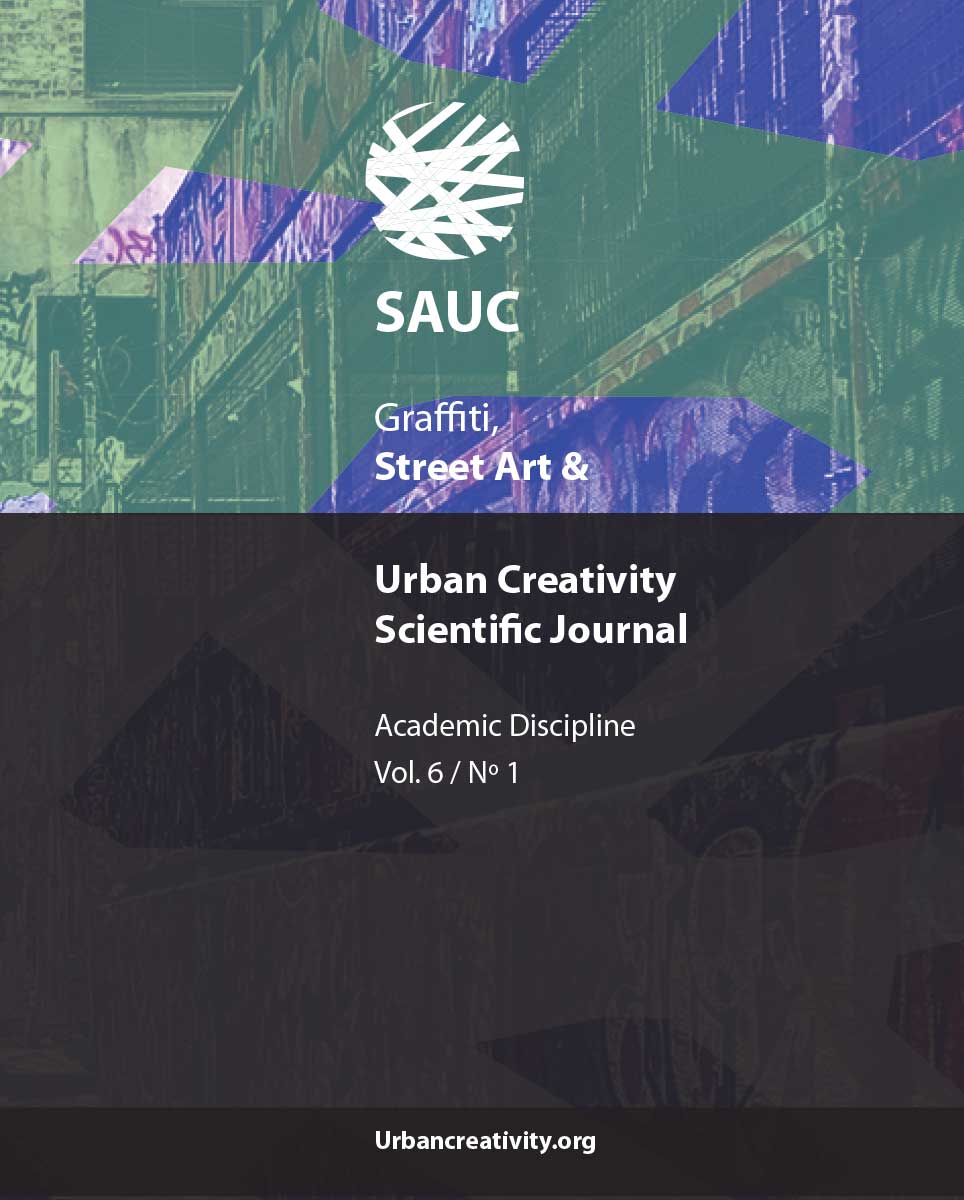Early Street Stencil Pioniers in the US 1969-85
Bojórquez, Fekner, Wojnarowicz and Vallauri
DOI:
https://doi.org/10.25765/sauc.v6i1.333Keywords:
Stencil, template, street art, Los Angeles, Chaz Bojórquez, John Fekner, Alex Vallauri, David Wojnarowicz, Burning House, Random Dates, Acrobat, Senior Suerte, Decay, USA, New York CityAbstract
Independent from New York Style writing graffiti Chaz Bojórquez invented the visual signature tag in Los Angeles in 1969. Like John Fekner in New York from 1976 onwards he created rather road art than street art, stencils for car drivers in the urban outskirts. Fekner mixed conceptual art and activist art in his few word poetry warning sign stencils on car wrecks and industrial ruins. Like Bojórguez also David Wojnarowicz and Alex Vallauri used visual signature stencil tags in early 1980ies New York. Both, Vallauri and Wojnoarowicz, also used smaller stencils in a modular way to create larger mixed freehand/stencil compositions.
Downloads
Global Statistics ℹ️
|
166
Views
|
82
Downloads
|
|
248
Total
|
|
Downloads
Published
How to Cite
Issue
Section
License
Those authors who publish in this journal accept the following terms:
-
Authors retain copyright.
-
Authors transfer to the journal the right of first publication. The journal also owns the publishing rights.
-
All published contents are governed by an Attribution-NoDerivatives 4.0 International License.
Access the informative version and legal text of the license. By virtue of this, third parties are allowed to use what is published as long as they mention the authorship of the work and the first publication in this journal. If you transform the material, you may not distribute the modified work. -
Authors may make other independent and additional contractual arrangements for non-exclusive distribution of the version of the article published in this journal (e.g., inclusion in an institutional repository or publication in a book) as long as they clearly indicate that the work was first published in this journal.
- Authors are allowed and recommended to publish their work on the Internet (for example on institutional and personal websites), following the publication of, and referencing the journal, as this could lead to constructive exchanges and a more extensive and quick circulation of published works (see The Effect of Open Access).













